8 inspiring selfies from the Philippines
by Anna Kramer, Oxfam America
Oxfam invited typhoon survivors to share their self-portraits. The results aren’t what you’d expect.
Be honest: raise your hand if you haven’t taken a selfie sometime in the past year.
Hand still down? Okay, that’s what I thought.
Hey, there’s no shame in it. From world leaders to astronauts to reclusive electronic musicians, we’ve increasingly made selfies part of our shared global vocabulary. (I confess I’ve taken one or two of them myself.) Whether you find it narcissistic or empowering, a selfie is an affirmation of identity, presence, and connectedness: an avatar of yourself in a given moment, shared with the world. Unlike a portrait taken by someone else, it’s an autonomous statement, a way of saying “I’m here.”
That’s why I was so intrigued by a series of recent photos from the Philippines. Oxfam’s team invited people living in Tacloban, one of the areas hit hardest by Typhoon Haiyan, to take selfies and share the messages they’d like to send to the global community.
These images matter, first and foremost, as a reminder of the typhoon that struck the Philippines three months ago. Though this might seem like ancient history in our fast-moving culture, survivors are still working hard each day to rebuild their lives. Oxfam has reached more than 500,000 people with lifesaving aid, but many challenges still remain, especially for those living in the poorest communities.
But what I like best about these selfies are the kinds of statements people chose to make with their images. Far from looking defeated, they come across as upbeat, affectionate, strong, and even playful. They’re the type of photos that wouldn’t seem out of place on a friend’s Facebook page or Instagram feed. It’s a reminder that all of us—whether we donated in response to this crisis or lived through it ourselves—are pretty much the same.
See some of the selfies and messages below, then leave a comment and tell us what you think.
Joel, 26, and his partner May May, 25, live in a house with stilts above the water in Rawis, Anibong Bay, Tacloban. Their home was totally destroyed by Typhoon Haiyan. Joel rebuilt a house using wood salvaged from the storm wreckage and a tarpaulin provided by Oxfam. Before the typhoon, Joel was a fisherman. He lost his boat and fishing equipment during the storm.
“I just want to say thank you to all the donors who helped us. Especially here in Tacloban,” said Mary May. “They helped us by giving us clothes and food. I just want to say thank you to all. We have received so much help.”
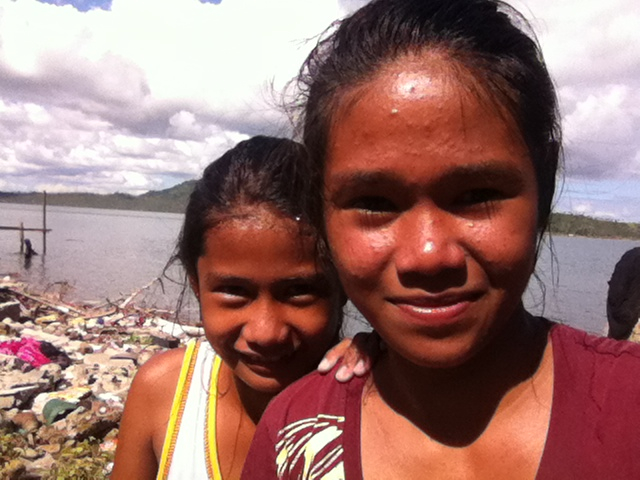
Mary Ann and Mary Grace, also pictured at the top of this post, received an Oxfam hygiene kit in January 2014. Their message: “All of the materials in the hygiene kit have been useful. The bed sheets, mat, and especially the soap and laundry bars–we use them to wash our clothes. We are helping our parents do household chores. We do the laundry and sometimes play with our friends.”
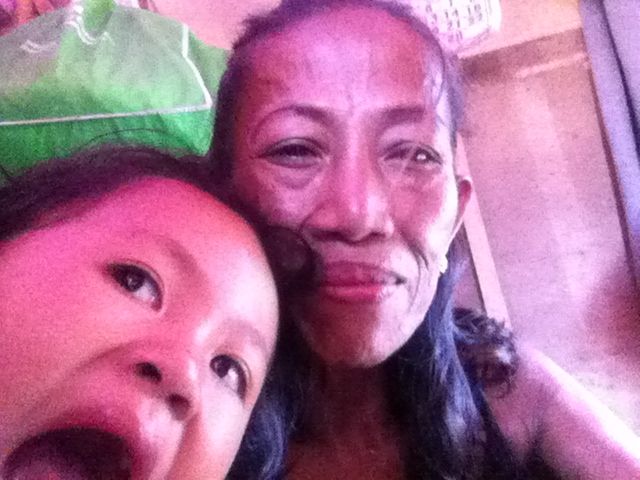
Lourdes Ayes, 52, and her granddaughter Precious, 3, inside their house in Anibong. Their message: “Before Yolanda we had a big house; there’s a big difference [between] this house [and] before. We have enough relief for our family but we don’t have the same house as before. If I had money I would start a small business, like a small shop or barbecue stall. Thank you to those who gave us the relief goods that we have.”
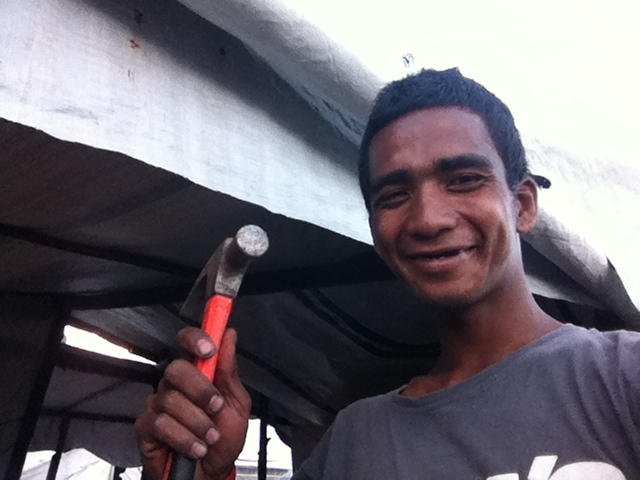
Philande, 22, stands outside his house in San Jose. His family home was destroyed during Typhoon Haiyan. Philande has built a new house using wood salvaged from the typhoon wreckage and a tarpaulin provided by Oxfam. “We want to ask for help, especially for shelter. We want to stay near the shoreline because this is where our livelihoods are,” said Philande.
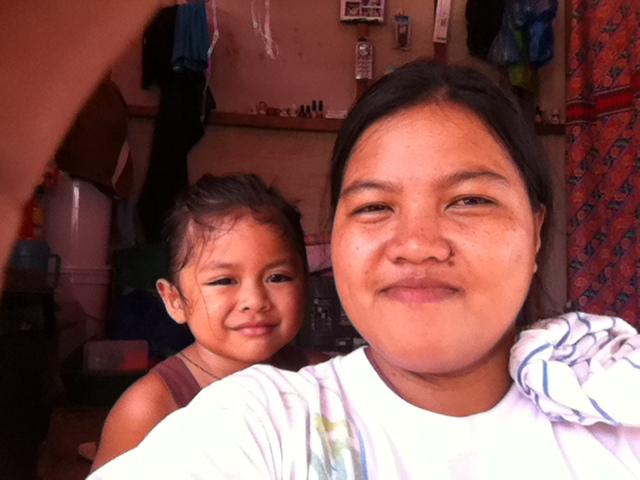
Joymie Arcappaga and her neighbor’s daughter Lindsey, 3. Joymie received an Oxfam hygiene kit and tarpaulin.She lives in Anibong. Her message: “Thank you to the donors who helped us. We are very contented with the help we have received. We need to have jobs. We want to go back to work. We want to find a long term plan. We are just waiting to hear from the government. What’s the plan? At some point the relief goods will stop. If we continue to receive relief help we are very grateful for the support.”
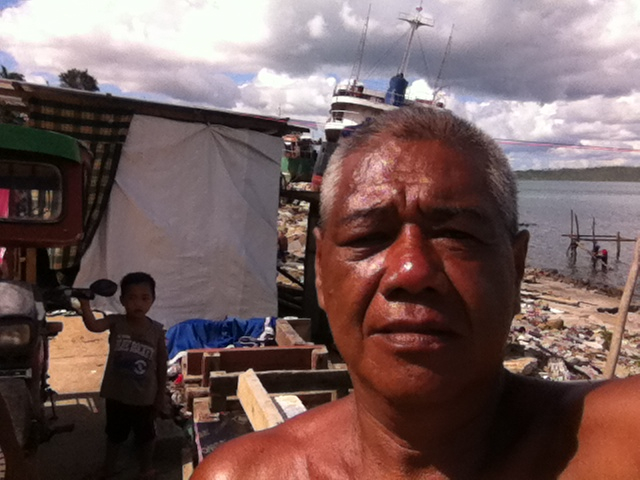
Jim Acosta, 58, stands in front of his shop in Anibong. Before Typhoon Haiyan, Acosta was a fisherman. His son was killed during the storm and he lost his fishing boat. “Oxfam was one of the very first agencies that came to help us,” said Acosta. “Oxfam bought clean drinking water here and it helped us in many ways. I just want to say thank you to Oxfam and all the donors.”
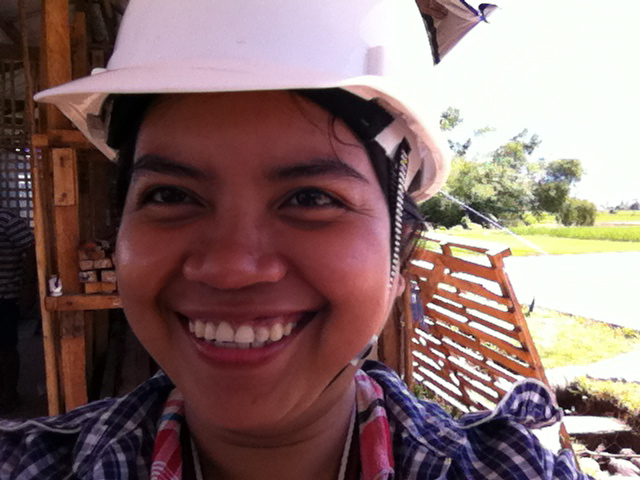
Arlene Arceo, 29, is manager of the Tugop Farmer’s Association. Oxfam has formed a partnership with the Tugop Farmer’s Association and has set up a sawmill operation to clear fallen coconut trees from the land and turn the wood into lumber.
“We thank Oxfam for helping us to recover after the typhoon. You give us new hope for our livelihoods and a new job on our coconut lumber project.”
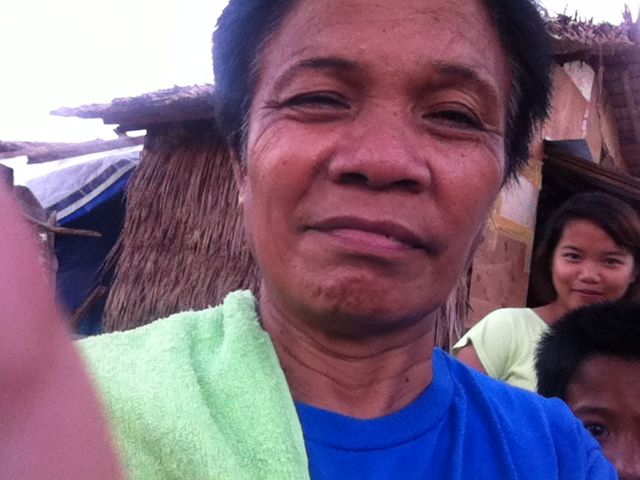
Lilia Asoy, 56, stands in Anibong, Tacloban. Lilia has six children. Her son Eliseo, 24, was killed during Typhoon Haiyan. Her house was totally destroyed. Lilia has rebuilt her house next to one of the giant ships which was washed ashore during the storm. Lilia’s message: “Thank you to those who helped us. Oxfam donors, thank you so much.”
Anna Kramer is a writer at Oxfam America. Based in Boston, she covers a wide range of issues for Oxfam both digitally and in print.
This blog originally appeared at firstperson.oxfamamerica.org

